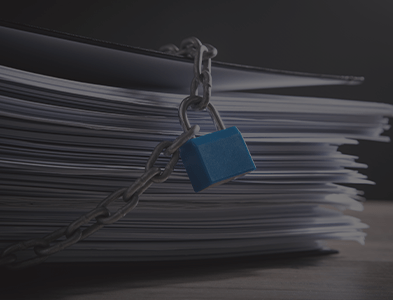Measuring Damages for the Misappropriation of Trade Secrets Under the Defend Trade Secrets Act of 2016
Measuring Damages for the Misappropriation of Trade Secrets Under the Defend Trade Secrets Act of 2016
Properly identifying the economic benefits related to trade secrets is paramount to understanding the value of those secrets and how best to recover lost value.
As technology continues to accelerate and new business models evolve for providing products and services, businesses attribute increasing proportional value to trade secrets. Given the expanding globalization of commerce and the opportunities to reach a much broader customer base, the competitive advantage a company may achieve by protecting its trade secrets is often the key contributor to its profitability and value.
However, the opportunities created by a business’ trade secrets also increase the risk that these secrets may be misappropriated. So the importance of protecting trade secrets, and of pursuing actions to seek recovery if they are unlawfully misappropriated, should be a greater focus for many businesses. Properly identifying the economic benefits related to trade secrets is paramount to understanding the value of those secrets and how best to recover this value from those that exploit misappropriated trade secrets.
The Defend Trade Secrets Act of 2016
The Defend Trade Secrets Act of 2016 (DTSA) became law on May 11, 2016. The act allows businesses to pursue actions in the federal court system when trade secrets are misappropriated. In general, the DTSA applies to trade secrets related to products and services used in interstate and foreign commerce. It is based on the Uniform Trade Secrets Act (UTSA), which was enacted in 1979 and amended in 1985. Most states have adopted the UTSA as state law or have incorporated some similar version.
Trade secrets under the DTSA include all forms of financial, business, scientific, technical, economic and engineering information, including patterns, plans, compilations, program devices, formulas, designs, prototypes, methods, techniques, processes, procedures, programs and codes. These qualify as trade secrets whether they are tangible or intangible and regardless of how they are stored, compiled or memorialized — whether physically, electronically, graphically, photographically or in writing.
Under the DTSA, owners of trade secrets may seek various remedies including injunctive relief, damages, exemplary damages and attorney’s fees. Damages available under the DTSA are discussed below. Additionally, the act allows for the federal court to issue an order for seizure of the property as necessary to prevent the misappropriated information from being further disseminated or made known to others. The seizure can be authorized by the court upon ex parte application, but only in extraordinary circumstances.
Damage claims under DTSA
Because the DTSA is similar to the UTSA, and thus most state trade secrets laws, it is expected that the resulting claims and measurement of damages will be similar. However, given that the federal courts have more experience with complex intellectual property disputes, including patent litigation, they will likely draw from past determinations and apply these to the measure of damages in trade secret actions. Further, the federal courts will likely provide a more consistent application of damages measurement in trade secret actions.
The remaining focus of this article will be on the three types of damages that the court may award under the DTSA, which are:
-
Damages for actual loss caused by the misappropriation of the trade secret.
-
Damages for any unjust enrichment caused by the misappropriation of the trade secret that is not addressed in computing damages for actual loss.
-
Damages caused by the misappropriation, measured by imposition of liability for a reasonable royalty for the misappropriator’s unauthorized disclosure or use of the trade secret.
Actual damages to the owner of the trade secret
On the most basic level, a business may experience lost revenue (sales) and/or incur increased costs (expenses) when another party exploits the trade secret. The net impact is lost incremental profits, both actually sustained in the past and reasonably expected in the future. Generally, the damage is measured at its net present value on a specific date, utilizing a reasonable rate of return for being deprived of the economic benefit of realizing those lost profits over the relevant time period.
When analyzing lost profits, it is important to consider the financial impact to the injured party on an incremental basis. That is: For the lost sales, what specific costs would have been expended to produce the products or services (“units”)? There can be a significant difference (either higher or lower) between a business’s average costs to produce all units sold before the misappropriation and the actual cost to produce just the units lost. Hence, a company’s average profit margin on all units sold before the loss of its trade secret may be a misleading measure of the actual profit margin on those units lost once “the secret’s out.” As an example, certain fixed costs are allocated to all units produced regardless of the volume sold; e.g., rent, depreciation, salaries, general and administrative costs. These costs may not be incrementally incurred to produce the units lost. Conversely, perhaps a new piece of equipment, higher material costs or a more expensive labor classification would have been required to produce the lost units.
A derivative of measuring the incremental lost profits associated with the trade secret involves establishing its valuation at the time of the misappropriation. One method is to measure the diminution in value to the entire business, causally connected to the trade secret, from the value at or just prior to the time of the misappropriation.
Another measure of the financial impact to the company may be the cost to develop and maintain the trade secret. Generally, this is viewed as establishing a floor for damages as it is recouping the investment in the asset, which may not be the value at the time the trade secret was misappropriated. These costs may be substantiated by business records or derived through a study of the reasonable costs for developing and maintaining the trade secret. Additionally, if the trade secret had been acquired, business records may establish the price paid for or reasonably allocated to this asset.
Unjust enrichment realized by the misappropriator of the trade secret
The DTSA provides that the owner of the trade secret may be awarded the economic benefit realized by the misappropriating party to the extent it does not duplicate the actual damages incurred by the owner as discussed above. Case law generally supports the idea that the owner of the trade secret need only establish the reasonable level of sales, or value derived by the other party, as the measurement of the amount to be disgorged. The other party then has the burden to prove that the economic benefit it received was not related to the misappropriated trade secret, or was a lesser amount than alleged by the owner of the trade secret. As an example, the owner of the trade secret presents proof of the sales likely realized by the other party. The other party then must demonstrate that its profits on those sales were lower than the alleged sales price or that the sales were not related to the trade secret in question.
In addition, it is reasonable to expect that the federal courts may also award the economic benefit from sales of convoyed products or services; i.e., those sales made in conjunction with the products or services that incorporated the misappropriated trade secret.
Another consideration in measuring unjust enrichment may be the costs and time saved by the infringing party in developing and bringing its product or service to market. At a minimum, this may indicate the value of the trade secret taken before realizing the profits from exploiting the trade secret.
Reasonable royalty as an alternative damage
The DTSA allows the court to award a reasonable royalty for the misappropriated trade secret in lieu of damages measured by any other methods. Here the federal courts will be able to draw from the methods used to measure a reasonable royalty in other intellectual property actions, especially patent infringement matters. The federal courts often use the 15 factors contained in the Georgia-Pacific case to assess the hypothetical scenario that a willing licensor (plaintiff) would have negotiated with a willing licensee (defendant) at arm’s length to agree on a reasonable royalty prior to the date the infringement occurred. Similar to determining damages by an assessment of unjust enrichment, the court may award a reasonable royalty to convoyed sales.
Although the DTSA allows for the award of a reasonable royalty, as is frequently awarded by federal courts in other intellectual property claims, it appears from the Senate Judiciary Report on the DTSA that it may not be favored over the other measures of damages. The report reads in part “…it is not the Committee’s intent to encourage the use of reasonable royalties to resolve trade secret misappropriation. Rather, the Committee prefers other remedies that, first, halt the misappropriator’s use and dissemination of the misappropriated trade secret and, second, make available appropriate damages.”
Conclusion
The Defend Trade Secrets Act of 2016 is not dissimilar from the Uniform Trade Secrets Act and the trade secrets laws enacted by individual states. The DTSA does bring the adjudication of these claims to the federal court and gives the court power to issue an order for seizure of property as necessary to prevent the misappropriated information from being further disseminated or made known to others. Under the DTSA, owners of trade secrets may seek various remedies including injunctive relief, damages, exemplary damages and attorney’s fees. The types of damages the court is able to award are commonly determined in other intellectual property claims. As such, it is expected that damages awarded by the court under the DTSA will over time become more consistently applied and uniform for all parties to the dispute.




